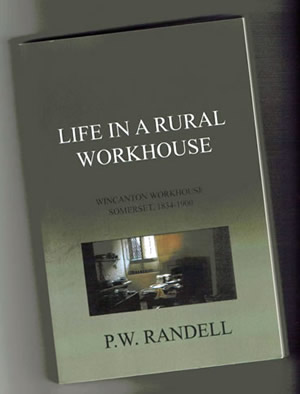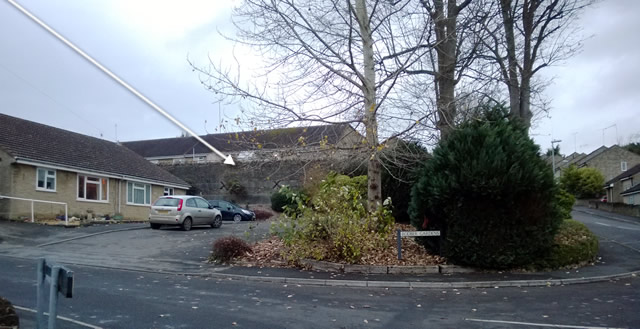Wincanton Workhouse – Life in a Rural Workhouse
 I am Bruton born and bred but have lived in the north of England for many years. I still come down to Somerset for research purposes and to visit family and friends each year.
I am Bruton born and bred but have lived in the north of England for many years. I still come down to Somerset for research purposes and to visit family and friends each year.
I have been interested in local history for as long as I can remember and since retiring have published three books on different aspects of the history of Bruton and its immediate neighbourhood. A fourth is going to a publisher in a few weeks and I will be writing a fifth one on the life and times of Hugh Sexey during the winter months.
Some thirty years ago I had the opportunity to undertake a research degree at a local university and I decided to tackle the Wincanton Poor Law Union. It was not, however, until 2010 that I drew upon some of that material for my book, Life in a Rural Workhouse: Wincanton Workhouse, Somerset 1834-1900. I write as P.W. Randell.
Background of the workhouse system
Throughout the medieval period communities were very small and tended to look after their own poor, aided by the Roman Catholic Church, especially the monasteries. When these were dissolved by Henry VIII in the 1530s the poor really suffered and by the 1590s their destitution had become acute, particularly as a result of a series of harvest failures.
In 1601 an Act of Parliament was passed which made each parish responsible for its own poor. All property was assessed and a rate levied which was collected by the Overseers of the Poor. These two unpaid men were elected annually by all the ratepayers and had the responsibility of distributing the money which they had collected to the poor. With a few slight amendments this system remained in place until 1834.
In the late eighteenth century and early nineteenth century the poor rates rose dramatically for a variety of reasons. In particular, however, the view developed that too many men and women who were perfectly capable of work, called the able-bodied, were not doing so because the amount of benefit and assistance they could obtain from the poor rates was greater (sound familiar?). A much stricter system was therefore demanded.
The Poor Law Amendment Act 1834
By this time it had also become clear that each parish alone was too small a unit to cope with the increase in poverty. The result was the Poor Law Amendment Act 1834 which swept away most of the old system.
Parishes were grouped together around a central market town – in our case Wincanton because as well as having a market it had good stage coach communications with London and Bristol and was the centre of the local Magistrates' Division.
Thirty-nine parishes from the area around Wincanton formed the Wincanton Poor Law Union, with each parish electing one or two men called Guardians of the Poor to serve on a committee to administer the Union.
Wincanton Workhouse
The Board of Guardians decided to build a new Workhouse for the whole Union in Wincanton. It was on a site just off Wright's Lane, now called Shadwell Lane, and in the twentieth century the building was renamed 'Town View' when its function changed. (On leaving Wincanton along Shadwell Lane on the left hand side amongst the new houses near the sharp corner where the railway bridge once crossed the road, an old wall may be seen. This is all that is left of the Workhouse.)

[WW: We've added this photo to better illustrate the location just off the junction of Shadwell Lane and Rodber Gardens. Workhouses.org.uk has more information about the Wincanton site, including some historic photos from inside and out.]
The function of the Workhouse was to discourage the poor from entering and so therefore they would try harder to find a job. The vast majority never entered a workhouse as they received help in their own homes so about 10% of those who asked for help were sent to the Wincanton Workhouse.
Nationally the idea was to make conditions in the workhouses worse than those of the poorest labourers who had jobs on the outside. In reality the state of these people was often so deplorable that the Guardians could not in all humanity do it – many of these poor were starving, dressed in rags and if they had a home at all it was usually damp, cold and the roof frequently leaked.
The Guardians therefore had to find a different approach and the one which was adopted nationally was to impose strict rules and regulations, backed up by punishments, on all those who entered the workhouses.
Life in the Workhouse was very regimented. Every moment of their day from the first bell in the morning to get them up until candles out at night was regulated. While there was adequate food the diet was repetitive and monotonous in the extreme, dominated by bread and gruel.
Hence Christmas Day was something special.
By the 1860s local residents were providing small gifts for the children in the form of fresh fruit and small toys. They even went so far as to provide a Christmas tree. For the rest of the year it was back to the same strict regime with daily work for the able-bodied, school for the children and nothing whatsoever to do for the elderly.
Many aspects of life in the Wincanton workhouse in the nineteenth century are traced in Life in a Rural Workhouse. Copies are still available from Bruton Museum, bookshops and on the internet.
Comments
Login to comment!